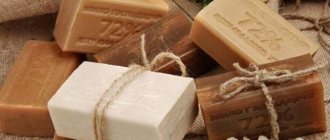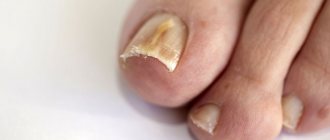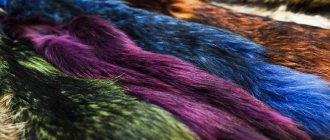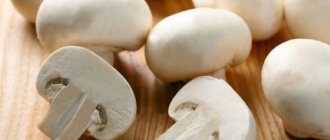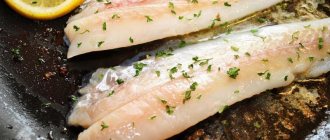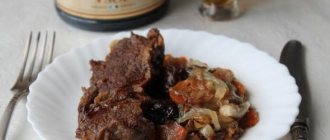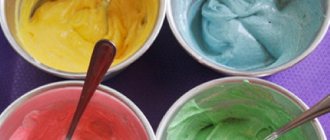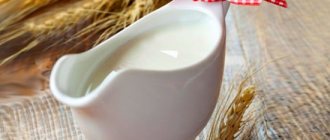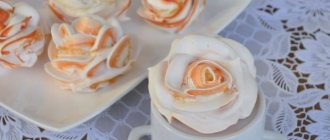The first soap began to be made more than five thousand years ago. The first soap products were made from rendered lard and tree ash. Gradually, other components began to be added to the composition, including vegetable oils and juices, whale and beef oil, clay and others.
Today, soap is a solid bar, cream or liquid solution consisting of molecules. These soap molecules combine with non-polar substances on the skin, including dust, dirt, grease, etc. In addition, these elements also combine with polar water molecules.
Thus, the chemical composition of soap acts as an intermediary between water and contaminants. Dirt molecules combine with water and are washed off the skin. Let's take a closer look at what different types of soap are made from. This will help you learn how to choose soap so that it is real, natural and the safest.
What is modern soap made from?
Modern soap making and chemicals. The composition of soap products is very different from the methods used before. The product is based on soluble salts obtained by chemical means. compounds of various fatty acids.
Industrial soap also contains vegetable oils and animal fat, dyes and flavors, chemical soap impurities and cosmetic additives, glycerin and sometimes lanolin.
After soap making in production, laundry solid soap is obtained. But with the addition of various cosmetic components, fragrances and dyes, aromatic toilet soap is made. And to obtain liquid soap from solids, potassium hydroxide is added to the composition.
This composition is far from natural and can cause irritation on the skin of the hands or other parts of the body. In addition, such components can cause severe allergies, especially in young children. For sensitive skin it is better to choose a natural product, and for babies - special baby liquid soap.
If you want to find a safe product, be sure to check the composition and the presence of the GOST mark. According to GOST, soap is made only from plant ingredients, so it is safer and more environmentally friendly. Let's look at the elements that are included in the chemical. compound.
We organize the educational process
Understand how you learn best. To practice effectively, you need to determine the training mode, intensity, and choose the best methods. To do this, you should remember all your previous endeavors and track which of them were successful and what you did for this. Maybe you prefer to study in the morning and set aside an hour for it, or maybe you like to study several times a week, but with greater intensity. Notice whether you can study at home or whether you need a workspace, library or even a cafe. The calmer and more pleasant you are to practice, the greater success you will achieve.
Get rid of irritants. In principle, you can study while being distracted by work or social networks. Students often listen to lectures while communicating with classmates. Scientists call this low-intensity exercise. They also lead to success, but you have to spend many times more time. It's better to find a secluded place, turn off notifications on your phone and study. Even if you only have half an hour, it will be well spent.
Change your surroundings. Try to study somewhere other than where you work. This is especially important for those who work remotely. The brain remembers the emotions associated with the workplace and, when you sit down to study, it will seem to you that you are working again, that is, doing complex tasks. Find a different desk, change the room, even study on the floor - let your brain get used to the new area dedicated specifically to studying.
Play sports. During training, your metabolism increases and your mood improves - if you catch this state, you can exercise more effectively than usual. But even if you can’t do just that, play sports anyway, especially in the fresh air. This strengthens the body and helps it perform better.
Read paper books more often. Of course, it’s easier to acquire IT skills by looking for tips on online forums and watching videos, but you shouldn’t completely neglect paper books. Research shows that students need less repetition to remember information when they read material from a sheet of paper rather than from a computer screen.
Ingredients in soap
| Elements | Description | What soap does it contain? |
| Glycerol | Can be of plant or animal origin, the first option is safer | An integral part of almost every soap |
| Lanolin | Animal wax that coats the wool of sheep and is obtained by treating the animals with organic solvents | Uncommonly found in soap products |
| Sodium Stearate and Stearic Acid | Stearates are made from animal or plant components. The second option is carried out according to GOST, and it is safer | Contained in most soap products |
| Sodium Tallowate | Sodium tallowate or a mixture of sodium salts of fatty acids, which are obtained from animal fats | Contained in 70% of all soap product varieties |
| Sodium Palmate | Sodium salt of fatty acids, which is obtained from palm oil, is a safe and natural component | Included in most types of soap |
| Sodium Cocoate | A mixture of fatty acids and sodium salts based on coconut palm, natural and safe ingredients | Found in expensive or handmade soaps |
| Sodium Palmitate | Sodium palmitate or plant-based palmitic acid, acceptable in soap | Included in most types of soap products |
| Fixed oils | Olive or sunflower oil prevents dry skin, gives softness and elasticity | Natural soap and handmade products |
| Chocolate | The supplement is suitable for any skin type, has a beneficial effect and improves mood | Natural soap and handmade products |
| Coffee | The additive tones the skin and has a scrub effect | Natural soap and handmade products, liquid soap |
| Honey | Natural natural supplement nourishes the skin, saturates it with vitamins and minerals | Natural soap and handmade products |
| Dyes | Give the soap the desired color and attractive appearance, but can cause an allergic reaction | Toilet and bath soap, cosmetic liquid soap |
| Fragrances and flavors | They give the product a pleasant fresh aroma, relieve inflammation and eliminate bacteria, but can cause allergies. Permissible content up to 2% of total weight | Toilet and bath soap, cosmetic liquid soap |
| Mustela or Mink oil | It is rare due to its high cost, but is not recommended for use. | Contained in expensive soap |
Industrial soap production.
For the industrial production of soap, any raw material that can be purchased cheaply is used.
Therefore, the raw materials for the production of industrial soap are beef, pork or mixed animal fats (i.e. waste from the meat industry), palm, coconut and other inexpensive oils, rosin (obtained by processing the resin of coniferous trees), synthetic (artificial) fatty acids, ( obtained from petroleum paraffin by catalytic oxidation with atmospheric oxygen), naphthenic acids released during the purification of petroleum products (gasoline, kerosene, etc.).
As you understand, all these fats are introduced according to the recipe to obtain certain properties, but no one would even think of calling such soap “natural”.
The process of industrial soap production occurs in two stages - chemical and mechanical stages.
At the first stage (soap cooking), an aqueous solution of sodium salts (less often potassium) of fatty acids or their substitutes (naphthenic, resin) is obtained.
Crude fats used in production are treated with alkali. The result is the so-called "soap glue" or "glue soap". This mixture is purified because it contains raw material contaminants.
Soap cooking is completed by treating the “soap glue” with electrolytes - excess alkali (NaOH) or NaCl solution. As a result, the soap separates.
The so-called floats to the surface. “Soap core is a concentrated soap that contains up to 60% fatty acids (oil). The bottom layer is the so-called “soap liquor”, which contains water, glycerin and feedstock contaminants.
Purified glycerin is most often added back to soap, but not necessarily all of it.
Glycerin obtained when making soap from animal or vegetable fats can be separated completely. It is widely used: in the production of explosives (trinitroglycerin) and polymer resins; as a fabric and leather softener; for perfumery, cosmetics and medical preparations; in the production of confectionery and liqueurs. It gives the latter a viscous consistency.
The soap obtained in this way is called sound soap, and the process of isolating it from the solution is called salting or salting out. This is done to increase the concentration of soap and clean it from protein, coloring and mechanical impurities - this is how laundry soap is obtained.
At the second stage of soap production, mechanical processing is carried out - cooling, drying, mixing with various additives, finishing and packaging.
The resulting soap (soap core) is ground on the rollers of a special sawing machine. As a result of this treatment, the percentage of fatty acids can be increased to an average of 73%. In addition, the resistance of the resulting soap to rancidity, drying out and high temperatures increases. The sawn soap is given the desired shape by pressing.
When making toilet soap, the water content in purified sound soap is artificially reduced from 30 to 12%. After which perfumes, bleaches such as titanium dioxide (TiO2), dyes, etc. are introduced into it.
Good grades of toilet soap are made from coconut or palm oil, of which 50% or more of the total volume of oils is used. Coconut oil dissolves well in cold water and is highly foaming. Expensive brands of toilet soap are made entirely from coconut oil. Sometimes toilet soap contains up to 10% free fatty acids.
To improve some characteristics of laundry soap (sometimes also for toilet soap), as well as to reduce the cost, fillers are introduced into its composition.
These can be sodium salts (Na2CO3, Na2B4O7, Na5P3O10, liquid glass), which when dissolved in water lead to alkalization, glues (casein, casein jelly), carbohydrates (starch). Adhesives and starch contribute to the foaming of the soap solution and the stability of the foam, but they do not have cleaning ability.
To obtain pastes, finely ground sand, crushed brick, and fatty clays are added to liquid laundry soap. They promote mechanical cleaning. Such soaps are used for cleaning kitchen utensils, unpainted furniture, floors, etc.
Expensive soaps use saponin to improve foaming. This substance is obtained by leaching certain plants, especially soap root. Saponin is highly soluble in water and its solutions foam strongly.
During the industrial production of soap, various types of flavorings, dyes, and preservatives are added to its composition. Most modern varieties of soap (toilet soap, baby soap, bath soap) add synthetic detergents: lauryl and laureth sulfates, sulfonates and other surfactants.
These artificially obtained substances have excellent cleaning properties, and due to their different pH values, they can act even in hard and sea water.
These substances can be harmful to the skin and even to the body as a whole. The effect of some of them on the human body has not been fully studied.
Laundry soap
This product is used for washing clothes and household items. You should not wash with this soap regularly. Cosmetologists sometimes advise using this product to restore hair and skin.
In addition, dentists recommend lathering your toothbrush with laundry soap after each brushing. Then harmful bacteria will not collect and accumulate on the bristles. Read how to properly care for your toothbrush here.
Laundry soap contains a large amount of alkali and fatty acids, as well as water. The product consists of only these three components. Thanks to this composition, it has a brown color and a characteristic odor.
This is a real natural antiseptic that effectively kills bacteria and disinfects things, removes stubborn stains and old dirt. It is suitable for fighting fungus and is even included in some medications.
When choosing a product, look at the percentage of acid and alkaline components. The composition of laundry soap is divided into three categories: 65, 70 and 72%. The most common is 72% laundry soap.
This is a clean, safe and environmentally friendly product that does not cause irritation or allergic reactions. Using 72% laundry soap is even suitable for washing children's clothes. In addition, it is well suited for disinfecting a child's bath.
Give preference to real, dark-colored laundry soap. If the product is light and has a pleasant smell, it means that fragrances have been added to the composition, which reduces the naturalness and whitening properties. Don't choose liquid laundry soap.
It includes toxic and harmful surfactants (surfactants) and is very different in composition from its natural counterpart. We looked at how to choose laundry soap, and then we will learn more about other types of soap products.
What is tar soap and how is it useful?
This type of soap is obtained by adding tar to a regular soap base in a volume of up to 10% of the total mass. Tar soap is an amazing product.
It can repeatedly increase the regenerating properties of the skin, fight fungi and lice, and have an almost immediate anti-inflammatory effect: it helps with herpes, ulcers, boils, eczema, dermatitis, psoriasis and much more.
Tar soap
This is a natural, environmentally friendly and high-quality product with a specific pungent odor. It will be an excellent and more affordable alternative to many expensive detergents. This product contains birch tar, which creates a strong and unpleasant odor. However, it is the tar that gives the product antibacterial and healing properties.
Tar soap contains 10% birch tar, the rest of the composition includes water, fats and alkali. Tar is obtained by dry distillation of tree resin. As a result, the product acquires a rich dark color with a bluish or greenish tint. This is a real and safe product that does not cause allergies and has a positive effect.
This product helps cope with rashes, slightly dries and exfoliates the skin, evens out the complexion and restores the skin, eliminates harmful bacteria, strengthens hair follicles and constricts blood vessels.
This is an effective remedy against dandruff and hair loss, fungus, thrush, and acne. It helps with bedsores, oily skin, and cracked heels. In addition, this product can be used for washing children's clothes.
By the way, you can make this product at home. To do this, take a natural soap base, to which birch tar and mint essential oil are added.
Antibacterial soap
It is a common cleaning agent in hospitals and public facilities. This product is produced in liquid form and is chosen for disinfection and elimination of various bacteria.
Antibacterial soap contains triclosan or triclocarban. These are antimicrobial elements that neutralize the effects of most microorganisms. Note that they kill both harmful and beneficial bacteria.
Triclosan and triclocarban, which are found in antibacterial soaps, leave active residues on surfaces. Therefore, the protective effect of the product lasts for a long time. However, you can easily use regular bar soap in your daily life as it will provide the same protective effect if you wash your hands regularly.
Chemical methods for producing soap
Soap production (soap making) is a rather long and complex process, consisting of several stages.
If we consider only the chemical reactions underlying the production of soap , then, as has already been discussed, soaps can be obtained by alkaline hydrolysis of fats, which produces glycerol and salts of higher carboxylic acids - soap. In addition to this, soaps are obtained by neutralizing higher carboxylic acids with sodium or potassium hydroxide or sodium carbonate:
- Saponification of triglycerides with sodium or potassium hydroxides
- Neutralization of higher carboxylic acids with sodium hydroxide (caustic soda) or potassium hydroxide
Solid soaps are obtained by dissolving higher carboxylic acids in an aqueous solution of sodium hydroxide, liquid soaps by dissolving higher carboxylic acids in an aqueous solution of potassium hydroxide.
- Neutralization of higher carboxylic acids with sodium carbonate (soda ash):
Liquid soap
Liquid products act more gently and are less likely to cause an allergic reaction. Therefore, when making a hypoallergenic or baby detergent, a liquid consistency is chosen. In addition, soap for newborns is also produced in liquid form. It is easier to use and dispense. The product does not become limp in a soap dish and does not split like a hard soap bar.
The composition of liquid soap includes vegetable and animal fats, minor substances with soft properties, flavors and dyes. This product is quite easy to prepare yourself. Follow the following instructions:
- Prepare a herbal decoction of chamomile, mint or lemon balm in a water bath;
- Dilute with boiled water;
- Take solid, unscented baby soap and grate it on a fine grater;
- Place the resulting shavings in the broth and place on low heat;
- Melt the mixture until smooth, stirring constantly;
- Add glycerin to the cooled soap product and mix well;
- Then additional components can be added to the mixture.
The herbal-based liquid mass is tender and soft. It moisturizes and soothes the skin. This solution can be given any color, smell and properties. To do this, add a few drops of essential oil to the cooled composition, but be aware of the possibility of an allergic reaction.
In addition, you can add food or natural dyes. This could be milk, coffee, juice, honey and so on. But don't overdo it with additives! It is not recommended to mix essential oils and fragrances.
We use pedagogical techniques
Practice even if you have achieved success. Learning is a never-ending process, so don't stop if you think you've already mastered a skill. If you don't repeat it regularly, it will be forgotten or worsened. Research shows that people who learn juggling have increased amounts of gray matter in the lobes responsible for visual memory. When they stopped practicing the new skill, the amount of the substance decreased.
Use previous skills to learn new ones. Moreover, these skills can be from completely different areas. It is clear that, having studied one programming language, it is not so difficult to master the next. But you will also need knowledge of mathematics, physics, English words, and maybe something else.
Explain what you learn to other people. Research shows that students remember information better when they know they will have to retell it to someone. And not just retell it, but make sure that the other person remembers the information and navigates it well. These students are more engaged in learning and instinctively use better mnemonic techniques. Therefore, find yourself a “student”, remember the information well and try to tell it as clearly as possible. Then most likely you will understand it yourself.
Take tests often. Research shows that tests help to update learned information, and not just what appears in the test. This does not mean that you need to prepare intensively for the tests - just start answering the questions and the brain itself will load the necessary information.
How to make handmade soap
The best natural and eco-friendly soap is a product you make yourself. This way you will be confident in the contents and components of the product. The easiest preparation method is to use a ready-made soap base, which can be purchased at any cosmetics store. In addition, you can take classic baby soap.
To prepare, grind the soap on a grater or take a ready-made liquid soap base. Dilute the ingredients with water and place on low heat. Cook until smooth, stirring regularly.
Then essential oil is added to the handmade soap. Use no more than 5-7 drops per 100 grams of finished base. Or you can take olive or sunflower oil in a volume of 1⁄3 teaspoon per hundred grams.
Additional additives include flower petals, herbal decoction, and pieces of fruit. Add up to three teaspoons of honey or ground coffee per hundred grams of soap solution.
In addition, you can add small pieces of chocolate at the rate of 2 grams of product per hundred grams of solution. The prepared liquid is poured into plastic containers and placed in a cold place until completely hardened. Homemade soap is ready!
If you do not want to prepare the product, you can replace the store-bought or homemade product with dry mustard powder. This product is suitable for washing dishes or washing clothes. And what you can replace washing powder with, read the link.
We pump up memory and attention
Choose your technique for remembering information. The most commonly used methods in teaching are spaced repetition, the Leitner system, and active recall.
The spaced repetition technique is based on the Ebinhaus theory - learned information is gradually forgotten if it is not repeated at the right time. Scientists periodically try to figure out the most effective “points” for repetition. For now, it’s worth using the “1-7-16-35” scheme, that is, repeating the material every other day, week, 16 and 35 days.
The Leitner system is a more sophisticated method of spaced repetition. It is convenient for memorizing complex terms or foreign languages. It can also help you learn commands and functions used in programming. The student needs to have 3 boxes. First, words that the student does not know or knows poorly are added to the first box. They need to be repeated every day. Once the student has learned the word, he puts it in the second box. The words from the second box are repeated every three days. Successfully learned words are sent to the third box, unlearned words are sent to the first. The words from the third box are repeated every five days. The practice continues until all the words are in the third box.
Active recall is most easily used not for remembering specific terms, but for learning about a larger topic. You need to read the educational material several times, and then not mechanically repeat it, but memorize it actively. For example, you can write an essay on the material you read, retell it to a friend, or create a list of questions based on the material and answer it.
Make connections between the concepts you've learned. Research shows that those who make connections between the ideas they learn learn faster. The easiest way to do this is to use mind maps, but you can do it differently. The main thing is to constantly include the terms and definitions you have learned in the overall context. For example, you can compile a dictionary from the terms you have studied and write them down on one sheet of paper - this already helps to form connections between concepts.
Help your attention. On the one hand, for intensive learning, you need to distract yourself from all irritants and concentrate on your studies. On the other hand, will and attention are exhaustible resources and the longer you concentrate on one subject, the more difficult it becomes. Therefore, it is worth constantly changing learning techniques and even studying several topics in parallel. Switch things up - solve a programming problem, then repeat some complex commands, and then write a simple application or function. You can also study two programming languages in parallel - this will also help you switch, and at the same time the general principles of programming and the relationships between languages will become clear.
